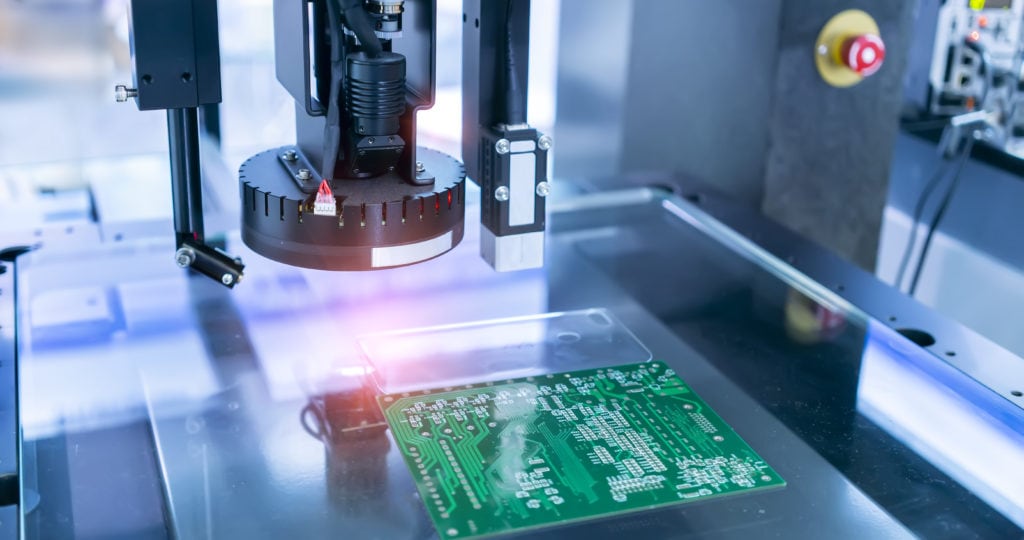Printed circuit boards (PCBs) are the foundational building block of most modern electronic devices. Whether simple single layered boards used in your garage door opener, to the six layer board in your smart watch, to a 60 layer, very high density and high-speed circuit boards used in super computers and servers, printed circuit boards are the foundation on which all of the other electronic components are assembled onto.
Semiconductors, connectors, resistors, diodes, capacitors and radio devices are mounted to, and “talk” to one another through the PCB.
Simply put, a PCB is a sheet of non-conductive material housing electrical components. The sheet, which is often made from fiberglass or plastic, is “printed” or “etched” with electrical circuitry, hence the term “circuit board.” The copper circuitry on a PCB connects electrical components, relaying electrical signals back and forth.
PCBs can be single-layer or multi-layer. In a single-layer PCB, all the electrical circuits and the components are on the same surface. On the other hand, in a multi-layer PCB, the non-conductive (substrate) layers are alternated with conductive electrical circuitry, forming a sort of sandwich.
PCBs meant for incredibly simple jobs like turning a light bulb on/off are often single-layer, while those meant for complex work environments like computers are multi-layered.
PCB Examples

The most famous example of a PCB is a computer’s motherboard.
A motherboard is a circuit board with dozens of electrical components like capacitors, Bluetooth and Wi-Fi radios, CPU, RAM, etc, mounted on top. All of these components are connected through the copper circuitry printed on the board.
Source : PrintedCircuits.com || MakeUseOf.com
